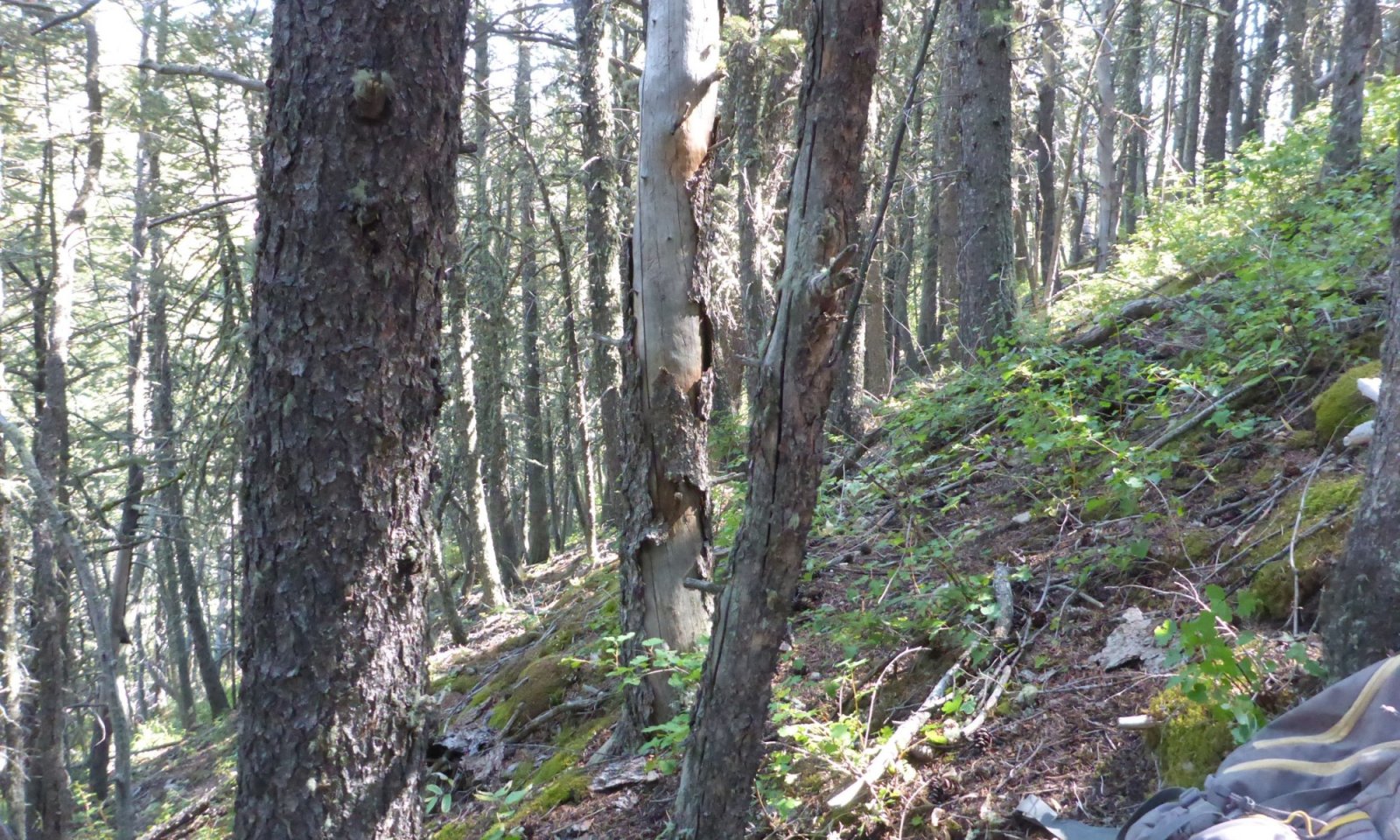

Natural Resources
Conservation Service
Ecological site F043BP702WY
Shallow Cool Woodland Group
Last updated: 4/09/2025
Accessed: 12/21/2025
General information
Provisional. A provisional ecological site description has undergone quality control and quality assurance review. It contains a working state and transition model and enough information to identify the ecological site.
MLRA notes
Major Land Resource Area (MLRA): 043B–Central Rocky Mountains
Major Land Resource Area (MLRA): 043B–Central Rocky Mountains
043B – Central Rocky Mountains – This MLRA is extensive including Montana, Idaho, Wyoming and a small portion in Utah. This MLRA consists of the major chains of Mountain Ranges with the corresponding valleys. Cartographic standards limited the ability to capture the foothills as a separate MLRA, so revisions of the MLRA boundaries in 2006 led to the inclusion of the foothills with the mountains for much of Wyoming.
Further information regarding MLRAs, refer to: United States Department of Agriculture, Natural Resources Conservation Service. 2006. Land Resource Regions and Major Land Resource Areas of the United States, the Caribbean, and the Pacific Basin. U.S. Department of Agriculture Handbook 296.
Available electronically at: http://www.nrcs.usda.gov/wps/portal/nrcs/detail/soils/ref/?cid=nrcs142p2_053624#handbook.
LRU notes
LRU P: PES (Provisional Ecological Site or Group - PEG) A PROVISIONAL ECOLOGICAL SITE is a conceptual grouping of soil map unit components within a Major Land Resource Area (MLRA) based on the similarities in response to management. Although there may be wide variability in the productivity of the soils grouped into a Provisional Site, the soil vegetation interactions as expressed in the State and Transition Model are similar and the management actions required to achieve objectives, whether maintaining the existing ecological state or managing for an alternative state, are similar. Provisional Sites are likely to be refined into more precise concept during the process of meeting the APPROVED ECOLOGICAL SITE DESCRIPTION criteria.
This PROVISIONAL ECOLOGICAL SITE has been developed to meet the standards established in the National Ecological Site Handbook. The information associated with this ecological site does not meet the Approved Ecological Site Description Standard, but it has been through a Quality Control and Quality Assurance processes to assure consistency and completeness. Further investigations, reviews and correlations are necessary before it becomes an Approved Ecological Site Description.
Classification relationships
Other Classifications:
PSME/PHMA habitat type (Steele Et.Al. 1983)
PSME/ACGL habitat type (Steele Et.Al. 1983)
PSME/SYAL habitat type (Steele Et.Al. 1983)
PSME/CARU habitat type (Steele Et.Al. 1983)
PSME/BERE habitat type (Steele Et.Al. 1983)
PSME/SPBE habitat type (Steele Et.Al. 1983)
PSME/JUCOD habitat type (Steele Et.Al. 1983)
PSME/ARCO habitat type (Steele Et.Al. 1983)
PIFL2/JUCOD habitat type (Steele Et.Al. 1983)
Ecological site concept
• Site does not receive any additional water
• Soils are
o Generally not saline or saline-sodic
o Shallow
o Typically less than 5% stone and boulder on surface (<15%)
o Soil surface texture ranges from sandy loam to clay loam in surface mineral 4”
Associated sites
| F043BP707WY |
Subirrigated Cool Woodland Group Subirrigated Cool Woodlands will occur below or at the foot of the Shallow Cool Woodlands, generally associated with the valley floor or low-lying flatter positions with the slopes coming up from the floor being the Shallow Cool Woodlands. |
|---|---|
| F043BP708WY |
Upland Aspen Woodland Group Upland Aspen Woodland can be intermixed with the Shallow Cool Woodland, especially in snow melt pockets or seeps occurring near or below rock outcrops, with the Shallow Cool woodlands occurring on the upper edges or sides associated with the rock outcrops. |
| F043BP710WY |
Upland Cool Woodland Group Upland Cool Woodland can be found in slightly concave or deeper soils below or around the Shallow Cool Woodlands. |
Similar sites
| F043BP704WY |
Shallow Warm Woodland Group Shallow Warm Woodlands have the same general site concept, except occurs on lower elevations or western aspect slopes across the Mountains. The warmer temperature affects both the tree species as well as the understory species. |
|---|---|
| R043BY260WY |
Shallow Igneous Foothills and Mountains West Shallow Igneous 15-19 |
| R043BY360WY |
Shallow Igneous (SwIg) 15-19” Foothills and Mountains East Precipitation Zone Shallow Igneous 15-19 |
| R043BY262WY |
Shallow Loamy Foothills and Mountains West Shallow Loamy 15-19 |
| R043BY362WY |
Shallow Loamy (SwLy) 15-19” Foothills and Mountains East Precipitation Zone Shallow Loamy 15-19 |
Table 1. Dominant plant species
| Tree |
(1) Pseudotsuga menziesii |
|---|---|
| Shrub |
(1) Symphoricarpos occidentalis |
| Herbaceous |
(1) Calamagrostis rubescens |
Click on box and path labels to scroll to the respective text.
Ecosystem states
| T1A | - | Post disturbance impacts reducing the Douglas-fir stands, including increased fire frequency, disease, insect pestilence, and clear-cut logging. |
|---|---|---|
| R2A | - | Time, management of desired species, and possibly the use of nursery stock or seeding will allow the timber stand to recover. |
State 1 submodel, plant communities
| 1.1A | - | Natural processes of aging, fire, insects and disease will allow the movement to a mixed timber stand. Selective timber harvest and controlled burns will also assist in this process. |
|---|---|---|
| 1.1B | - | Natural or applied techniques to open the canopy of Douglas-fir can encourage quaking aspen when the hydrologic conditions and nursery stalk is present. |
| 1.2A | - | Lack of timber management, with fire or other techniques, will lead to a mature nearly monoculture stand of Douglas-fir. |
| 1.2B | - | Removal or opening of current conifer stands encourages the re-establishment of quaking aspen. |
| 1.3A | - | Lack of fire and the impacts of disease and insect damage to quaking aspen lead to the loss of aspen and the increase of conifers. |
State 2 submodel, plant communities
| 2.1A | - | Natural succession or with stand management and plantings, mixed conifer growth will become the dominant cover on this site. |
|---|---|---|
| 2.2A | - | Fire or other disturbances that remove the woody canopy allowing the under-story to become dominant on the site. |




